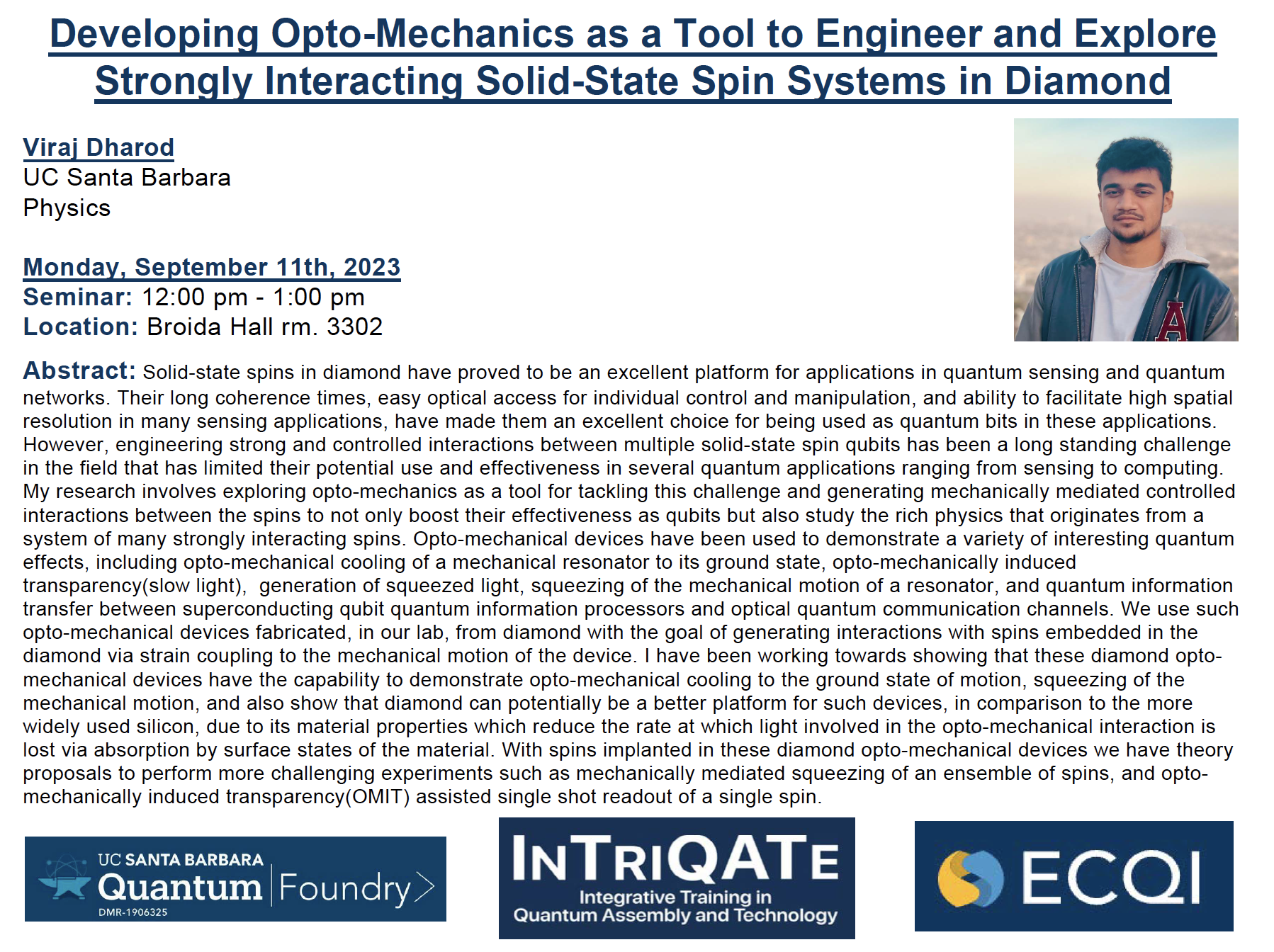EQuAL Seminar: Viraj Dharod

"Developing Opto-Mechanics as a Tool to Engineer and Explore Strongly Interacting Solid-State Spin Systems in Diamond"
Solid-state spins in diamond have proved to be an excellent platform for applications in quantum sensing and quantum networks. Their long coherence times, easy optical access for individual control and manipulation, and ability to facilitate high spatial resolution in many sensing applications, have made them an excellent choice for being used as quantum bits in these applications. However, engineering strong and controlled interactions between multiple solid-state spin qubits has been a long standing challenge in the field that has limited their potential use and effectiveness in several quantum applications ranging from sensing to computing. My research involves exploring opto-mechanics as a tool for tackling this challenge and generating mechanically mediated controlled interactions between the spins to not only boost their effectiveness as qubits but also study the rich physics that originates from a system of many strongly interacting spins. Opto-mechanical devices have been used to demonstrate a variety of interesting quantum effects, including opto-mechanical cooling of a mechanical resonator to its ground state, opto-mechanically induced transparency(slow light), generation of squeezed light, squeezing of the mechanical motion of a resonator, and quantum information transfer between superconducting qubit quantum information processors and optical quantum communication channels. We use such opto-mechanical devices fabricated, in our lab, from diamond with the goal of generating interactions with spins embedded in the diamond via strain coupling to the mechanical motion of the device. I have been working towards showing that these diamond opto-mechanical devices have the capability to demonstrate opto-mechanical cooling to the ground state of motion, squeezing of the mechanical motion, and also show that diamond can potentially be a better platform for such devices, in comparison to the more widely used silicon, due to its material properties which reduce the rate at which light involved in the opto-mechanical interaction is lost via absorption by surface states of the material. With spins implanted in these diamond opto-mechanical devices we have theory proposals to perform more challenging experiments such as mechanically mediated squeezing of an ensemble of spins, and opto-mechanically induced transparency(OMIT) assisted single shot readout of a single spin.